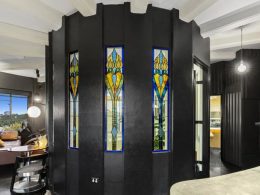Investing in real estate has long been a popular choice for those looking to diversify their investment portfolio, and multi-family properties have become increasingly attractive to investors in recent years. Multi-family properties, also known as apartment buildings or complexes, offer a range of benefits that make them an appealing option for investors. However, as with any investment, there are also potential drawbacks that must be considered. In this article, we’ll explore the pros and cons of investing in multi-family properties.
Pros:
- Income Potential: One of the biggest advantages of investing in multi-family properties is the potential for steady income. With multiple tenants paying rent, you have the ability to generate more income than you would with a single-family property. Additionally, if you are able to increase the rent over time, your income will grow as well.
- Diversification: Investing in multi-family properties can also help diversify your portfolio. Real estate tends to perform differently than other investments like stocks and bonds, so adding it to your portfolio can provide a level of stability and protection against market volatility.
- Lower Vacancy Rates: In a multi-family property, if one unit becomes vacant, you still have other units generating income. This makes it less risky than investing in a single-family property where a vacancy could result in a complete loss of income.
- Economies of Scale: Multi-family properties benefit from economies of scale, which means that the cost per unit is typically lower than it would be for a single-family property. For example, maintenance costs, property management fees, and other expenses can be spread across multiple units, making each unit more profitable.
Cons:
- Management Challenges: Managing a multi-family property can be more complex than managing a single-family property. With more units and tenants, there are more maintenance and management issues to deal with, and it can be more challenging to keep everyone happy.
- Higher Upfront Costs: Multi-family properties generally require a larger upfront investment than single-family properties. This can make it more difficult to get started, especially for first-time investors.
- Higher Turnover Rates: Tenants in multi-family properties tend to stay for shorter periods of time than tenants in single-family properties. This means that you may have to spend more time and money on finding and screening new tenants.
- Market Risk: Like any investment, multi-family properties are subject to market risk. Changes in the real estate market or in the local economy could affect your property’s value and income potential.
Conclusion:
Investing in multi-family properties can be a smart move for those looking for a stable income stream and diversification in their investment portfolio. However, it’s important to carefully consider the potential challenges and risks before making a decision. If you’re willing to put in the work and are comfortable with the risks, investing in multi-family properties could be a great choice for you.












